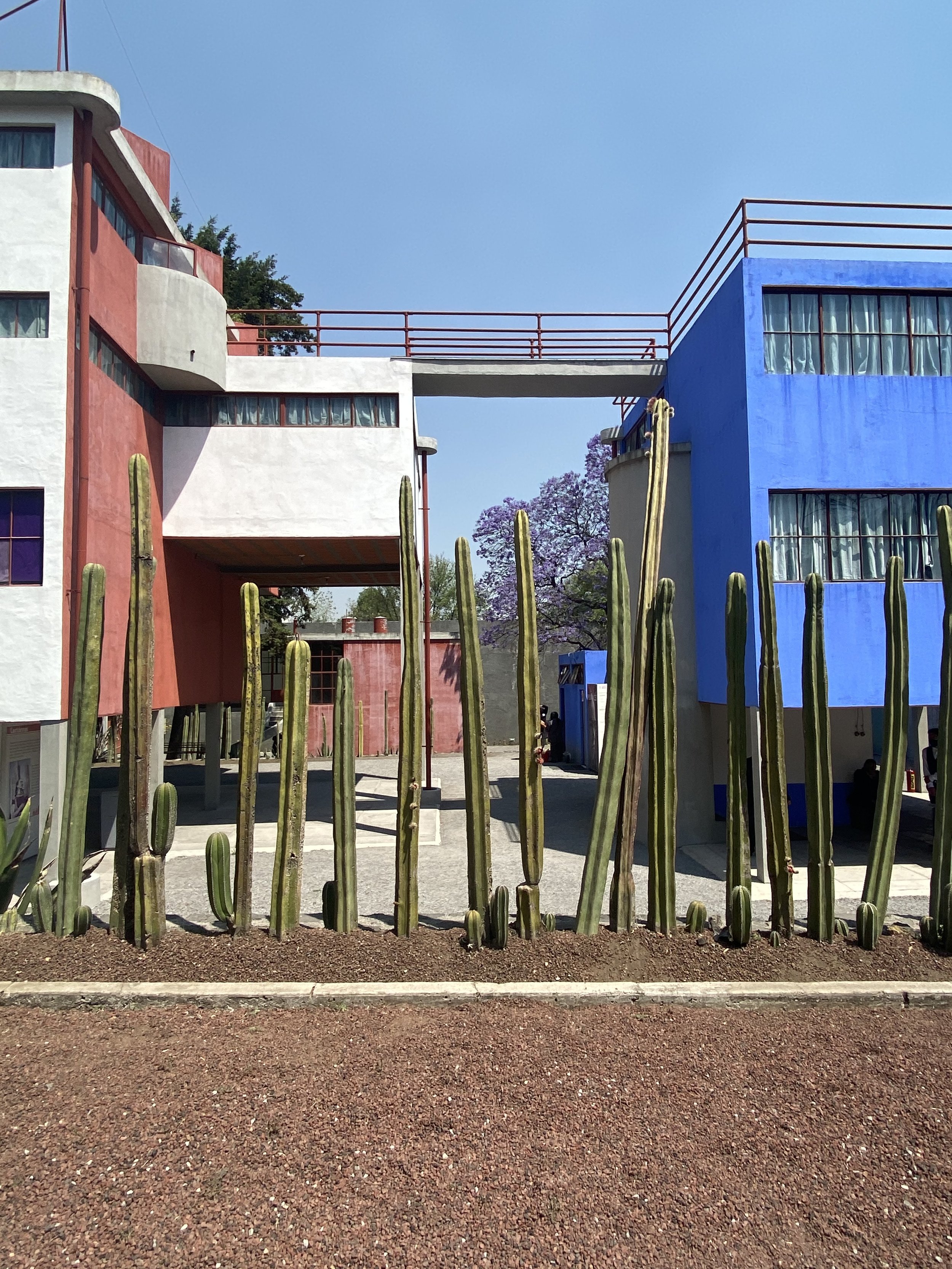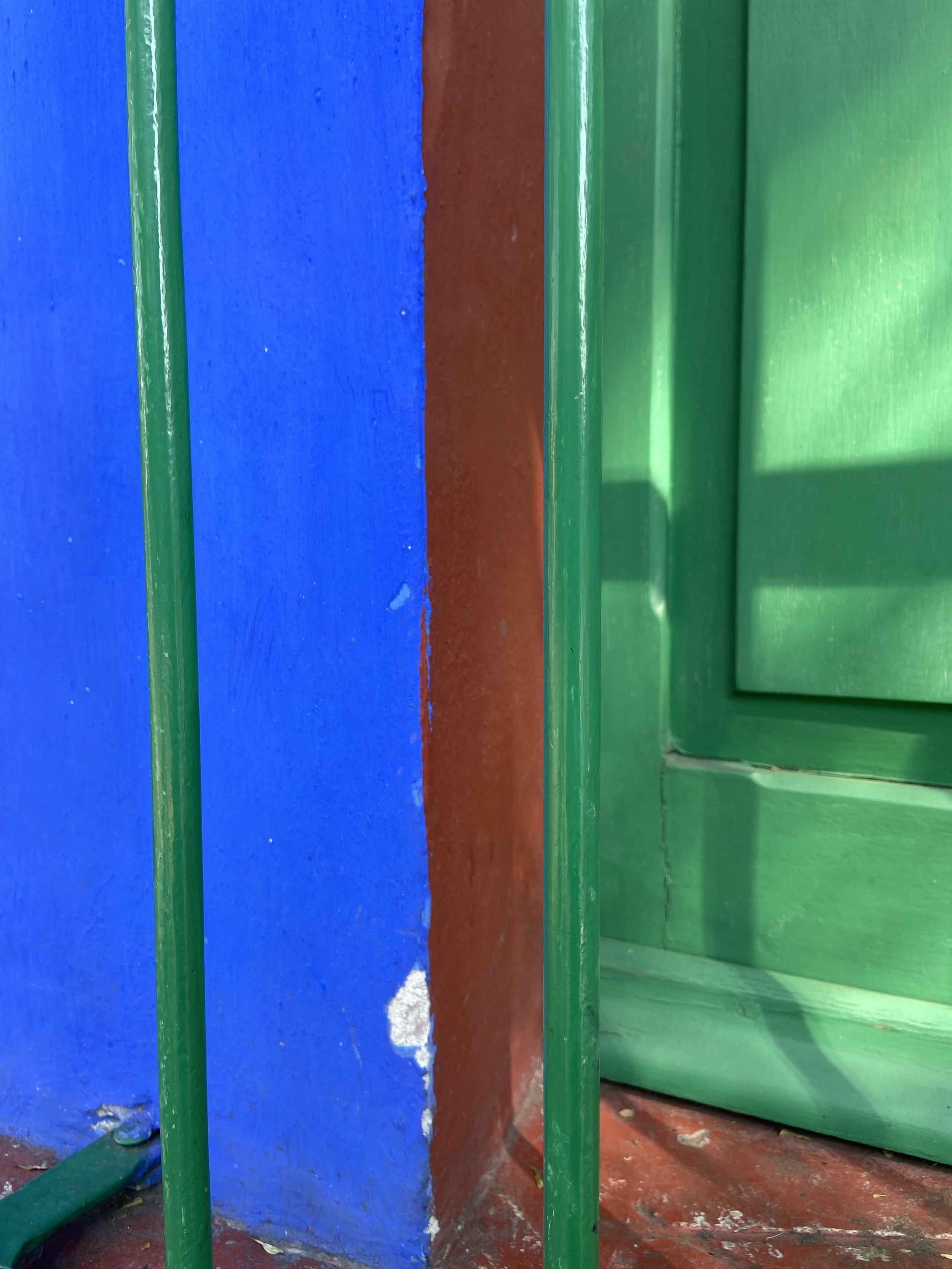Visiting Frida
La Casa Azul or The Blue House was where Frida Kahlo was born, lived most of her life, and also died in. She stood by her home, her country all her life and chose to rest where she was born, which is an admirable trait. A person can be born at one place. However, s/he may die several times elsewhere; in heartbreak, in trauma, in oppression. Reading about Frida’s life, how difficult it was since the beginning and how it never came to be easy till her last breath, those words came to life while visiting her house.
As you enter, the high blue walls surround you, within which there is an open courtyard.Her home, her journal, and her objects are where her personality and spirit still remain. The pages of her diary reveal the meanings that the artist attributed to colours. Blue, for example, was "electricity and purity," while yellow represented "madness, illness, fear, part of the sun, and happiness". The striking blue and vibrant yellow floors can steal your breath away.
You are surrounded by an oasis of culture; pre-Hispanic figurines smiling at you from different directions, a variety of green life, a place that became a refuge for her, her husband, and the many animals she nurtured during her lifetime. The house is filled with traditional utensils, local art, and her assorted collection of books and poetry.Her home had two bedrooms, one was her night bed and one for the day. The night bed had butterflies above, while the day divan for lounging had a mirror on top to help her paint her self portraits — that is where her ashes lie today.
Peeking through her dresser and catching on the columbian necklaces carefully curated and customized by Kahlo herself, she matched them proudly with Tehuana embroidered blouses and long skirts, the hand-painted medical corsets to support her spine and tender love letters. Due to physical traumas, she was keenly aware of how to portray herself with clothes. She made the traditional dress her second skin to define her political identity. Her intricate hairstyle often consisted of braids and flowers. Every piece of jewellery, chain, scarf, and shawl added to the gracious chaos despite her physical restrictiveness. Kahlo’s relationship with her dressing involved deep thought and intention. She transformed herself through adornment.
She was an independent thinker and creative woman of her time; despite suffering from polio and the many surgeries she had over the years she did not lose her spirit. She was inspired by the Mexican Revolution and consistently participated in left wing reforming alliances and her support is seen in her work and personal life. Her journals had several depictions of her physical disabilities that brought intense pain and discomfort to her throughout her life, but which influenced her unique perspective on art and the very visceral imageries several of her paintings had.. She felt fragile but determined to create her own joy. Frida continues to be a symbol of power, hope, and voice for many underrepresented communities and is celebrated as a champion who was true to her convictions.




